
Submission to Biosecurity Amendment (Miscellaneous Measures) Bill 2017 exposure draft
Submitted: January 2018
Comments on the exposure draft of the Biosecurity Amendment (Miscellaneous Measures) Bill 2017. The proposed changes are fully supported.

Submitted: January 2018
Comments on the exposure draft of the Biosecurity Amendment (Miscellaneous Measures) Bill 2017. The proposed changes are fully supported.

November 2017
With the Australian Government assuming responsibility for pre-border and border biosecurity there is now potential for Norfolk Island to be an exemplar in conservation-based island biosecurity.

October 2017
This report presents the result of surveys conducted by Ecology Australia for the smooth newt during the spring of 2016 in south-east Melbourne to help determine the ongoing persistence and spread of the species.

Submitted: August 2017
The work of the Invasive Species Council has been widely recognised by governments and the community and strongly opposes any requirement for DGR registered groups to undertake expenditure on environmental remediation. This proposed measure is extremely inefficient, illogical and disruptive and would have an extremely detrimental impact on our work.
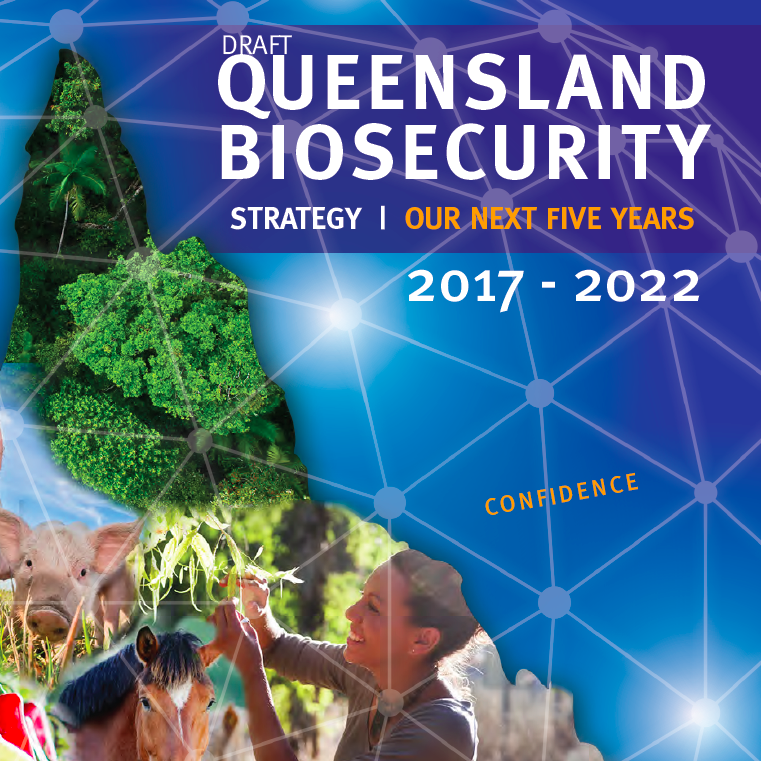
Submitted: July 2017
A joint submission to the draft Queensland Biosecurity Strategy 2017-22 by the Invasive Species Council, Queensland Conservation Council and Wildlife Preservation Society of Queensland. The strategy is broadly endorsed but argues for a greater emphasis on environmental biosecurity and recognition of the limited capacity of the conservation sector.

Submitted: June 2017This submission highlights the need to prioritise prevention and early detection and expresses support for a response model based on risk. It also encourages measures that are not be dependent on quantitative or financial assessment benefits.

Submitted: June 2017
This submission to the draft Tasmanian biosecurity legislation provides 25 recommendations ranging from suggestions that in environmental biosecurity matters the Environment Minister be consulted through to requiring a general biosecurity duty.

March 2017
Our best-practice environmental guide for Australian policy makers shows how we can create a biosecurity system that’s properly aimed at delivering real environmental protection on behalf of all Australians.

February 2017
Habitat loss is often assumed to be the main threatening process in Australia. This compilation of evidence demonstrates that invasive species are the main threat facing Australias declining mammals and frogs and, along with habitat loss and potentially climate change, represents one of the three main threats to biodiversity.

Submitted: March 2017
This submission seeks the automatic triggering of NEBRA for priority organisms, majority instead of consensus decision-making, an emergency response fund, meaningful involvement of environmental stakeholders and environment departments, increased transparency, application of the precautionary principle and removal of the requirement for eradications to be cost beneficial.
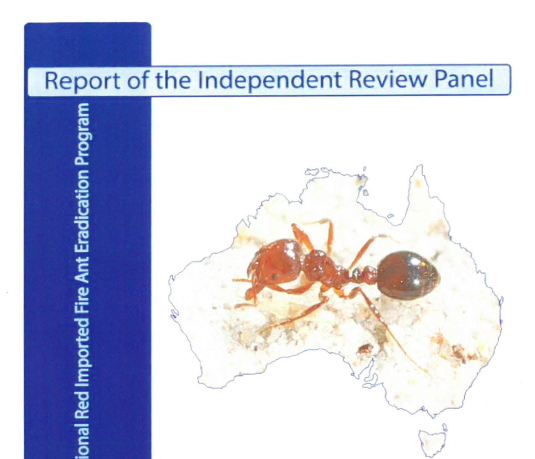
The final report of the independent review panel commissioned by the Agriculture Ministers’ Forum that reviewed the National Red Imported Fire Ant Eradication Program and outlined options for achieving eradication of red fire ants from south east Queensland.
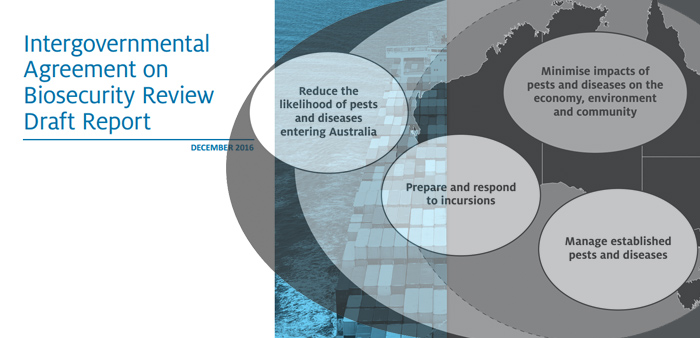
Submitted: February 2017
The independent review of Australia’s biosecurity recognises that environmental biosecurity needs greater attention. This submission endorsed by 21 other conservation organisations supports the major initiatives relating to environmental biosecurity and improved research, transparency and community engagement.

Submitted: February 2017
This submission to the draft regulations to the NSW Biosecurity Act 2016 rejects the regulations since they appear to merely transition existing management practices to the new legislation without a review of measures to reduce environmental biosecurity risks.

Submitted: December 2016
A joint submission by the Invasive Species Council and the Tasmanian Conservation Trust to the Tasmanian government Future Directions statement: Future Direction for a new Contemporary Biosecurity Legislative Framework.
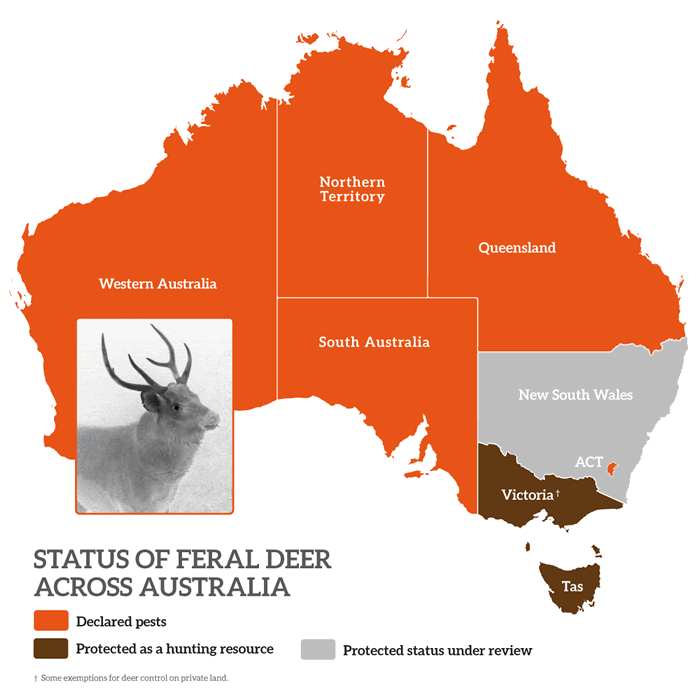
Submitted: September 2016
Due to their rising numbers and effect on natural ecosystems, deer are the most important emerging vertebrate pest in eastern Australia. Recreational hunting generally provides little or no benefit to feral animal control. Volunteer shooting can assist feral animal control in a limited number of circumstances.

Submitted: January 2018
Comments on the exposure draft of the Biosecurity Amendment (Miscellaneous Measures) Bill 2017. The proposed changes are fully supported.

November 2017
With the Australian Government assuming responsibility for pre-border and border biosecurity there is now potential for Norfolk Island to be an exemplar in conservation-based island biosecurity.

October 2017
This report presents the result of surveys conducted by Ecology Australia for the smooth newt during the spring of 2016 in south-east Melbourne to help determine the ongoing persistence and spread of the species.

Submitted: August 2017
The work of the Invasive Species Council has been widely recognised by governments and the community and strongly opposes any requirement for DGR registered groups to undertake expenditure on environmental remediation. This proposed measure is extremely inefficient, illogical and disruptive and would have an extremely detrimental impact on our work.

Submitted: July 2017
A joint submission to the draft Queensland Biosecurity Strategy 2017-22 by the Invasive Species Council, Queensland Conservation Council and Wildlife Preservation Society of Queensland. The strategy is broadly endorsed but argues for a greater emphasis on environmental biosecurity and recognition of the limited capacity of the conservation sector.

Submitted: June 2017This submission highlights the need to prioritise prevention and early detection and expresses support for a response model based on risk. It also encourages measures that are not be dependent on quantitative or financial assessment benefits.

Submitted: June 2017
This submission to the draft Tasmanian biosecurity legislation provides 25 recommendations ranging from suggestions that in environmental biosecurity matters the Environment Minister be consulted through to requiring a general biosecurity duty.

March 2017
Our best-practice environmental guide for Australian policy makers shows how we can create a biosecurity system that’s properly aimed at delivering real environmental protection on behalf of all Australians.

February 2017
Habitat loss is often assumed to be the main threatening process in Australia. This compilation of evidence demonstrates that invasive species are the main threat facing Australias declining mammals and frogs and, along with habitat loss and potentially climate change, represents one of the three main threats to biodiversity.

Submitted: March 2017
This submission seeks the automatic triggering of NEBRA for priority organisms, majority instead of consensus decision-making, an emergency response fund, meaningful involvement of environmental stakeholders and environment departments, increased transparency, application of the precautionary principle and removal of the requirement for eradications to be cost beneficial.

The final report of the independent review panel commissioned by the Agriculture Ministers’ Forum that reviewed the National Red Imported Fire Ant Eradication Program and outlined options for achieving eradication of red fire ants from south east Queensland.

Submitted: February 2017
The independent review of Australia’s biosecurity recognises that environmental biosecurity needs greater attention. This submission endorsed by 21 other conservation organisations supports the major initiatives relating to environmental biosecurity and improved research, transparency and community engagement.

Submitted: February 2017
This submission to the draft regulations to the NSW Biosecurity Act 2016 rejects the regulations since they appear to merely transition existing management practices to the new legislation without a review of measures to reduce environmental biosecurity risks.

Submitted: December 2016
A joint submission by the Invasive Species Council and the Tasmanian Conservation Trust to the Tasmanian government Future Directions statement: Future Direction for a new Contemporary Biosecurity Legislative Framework.

Submitted: September 2016
Due to their rising numbers and effect on natural ecosystems, deer are the most important emerging vertebrate pest in eastern Australia. Recreational hunting generally provides little or no benefit to feral animal control. Volunteer shooting can assist feral animal control in a limited number of circumstances.

Submitted: January 2018
Comments on the exposure draft of the Biosecurity Amendment (Miscellaneous Measures) Bill 2017. The proposed changes are fully supported.

November 2017
With the Australian Government assuming responsibility for pre-border and border biosecurity there is now potential for Norfolk Island to be an exemplar in conservation-based island biosecurity.

October 2017
This report presents the result of surveys conducted by Ecology Australia for the smooth newt during the spring of 2016 in south-east Melbourne to help determine the ongoing persistence and spread of the species.

Submitted: August 2017
The work of the Invasive Species Council has been widely recognised by governments and the community and strongly opposes any requirement for DGR registered groups to undertake expenditure on environmental remediation. This proposed measure is extremely inefficient, illogical and disruptive and would have an extremely detrimental impact on our work.

Submitted: July 2017
A joint submission to the draft Queensland Biosecurity Strategy 2017-22 by the Invasive Species Council, Queensland Conservation Council and Wildlife Preservation Society of Queensland. The strategy is broadly endorsed but argues for a greater emphasis on environmental biosecurity and recognition of the limited capacity of the conservation sector.

Submitted: June 2017This submission highlights the need to prioritise prevention and early detection and expresses support for a response model based on risk. It also encourages measures that are not be dependent on quantitative or financial assessment benefits.

Submitted: June 2017
This submission to the draft Tasmanian biosecurity legislation provides 25 recommendations ranging from suggestions that in environmental biosecurity matters the Environment Minister be consulted through to requiring a general biosecurity duty.

March 2017
Our best-practice environmental guide for Australian policy makers shows how we can create a biosecurity system that’s properly aimed at delivering real environmental protection on behalf of all Australians.

February 2017
Habitat loss is often assumed to be the main threatening process in Australia. This compilation of evidence demonstrates that invasive species are the main threat facing Australias declining mammals and frogs and, along with habitat loss and potentially climate change, represents one of the three main threats to biodiversity.

Submitted: March 2017
This submission seeks the automatic triggering of NEBRA for priority organisms, majority instead of consensus decision-making, an emergency response fund, meaningful involvement of environmental stakeholders and environment departments, increased transparency, application of the precautionary principle and removal of the requirement for eradications to be cost beneficial.

The final report of the independent review panel commissioned by the Agriculture Ministers’ Forum that reviewed the National Red Imported Fire Ant Eradication Program and outlined options for achieving eradication of red fire ants from south east Queensland.

Submitted: February 2017
The independent review of Australia’s biosecurity recognises that environmental biosecurity needs greater attention. This submission endorsed by 21 other conservation organisations supports the major initiatives relating to environmental biosecurity and improved research, transparency and community engagement.

Submitted: February 2017
This submission to the draft regulations to the NSW Biosecurity Act 2016 rejects the regulations since they appear to merely transition existing management practices to the new legislation without a review of measures to reduce environmental biosecurity risks.

Submitted: December 2016
A joint submission by the Invasive Species Council and the Tasmanian Conservation Trust to the Tasmanian government Future Directions statement: Future Direction for a new Contemporary Biosecurity Legislative Framework.

Submitted: September 2016
Due to their rising numbers and effect on natural ecosystems, deer are the most important emerging vertebrate pest in eastern Australia. Recreational hunting generally provides little or no benefit to feral animal control. Volunteer shooting can assist feral animal control in a limited number of circumstances.
Get our blog the Feral Herald delivered to your inbox.
The Invasive Species Council was formed in 2002 to seek stronger laws, policies and programs to protect nature from harmful pests, weeds and diseases.
The Invasive Species Council acknowledges the Traditional Custodians throughout Australia and their connections to land and sea. We pay our respect to their Elders past and present and extend that respect to all Aboriginal and Torres Strait Islander peoples today.
Our protected areas are being trashed, trampled, choked and polluted by an onslaught of invaders. Invasive species are already the overwhelming driver of our animal extinction rate, and are expected to cause 75 of the next 100 extinctions.
But you can help to turn this around and create a wildlife revival in Australia.
From numbats to night parrots, a tax-deductible donation today can help defend our wildlife against the threat of invasive weeds, predators, and diseases.
As the only national advocacy environment group dedicated to stopping this mega threat, your gift will make a big difference.
A silent crisis is unfolding across Australia. Every year, billions of native animals are hunted and killed by cats and foxes. Fire ants continue to spread and threaten human health. And the deadly strain of bird flu looms on the horizon. Your donation today will be used to put the invasive species threat in the media, make invasive species a government priority, ensure governments take rapid action to protect nature and our remarkable native wildlife from invasives-led extinction, death and destruction.
If you are having trouble submitting a form, please read this guide.
Please fill out the following form and one of our team will be in contact to assist as soon as possible. Please make sure to include any helpful information, such as the device you were using (computer, tablet or mobile phone) and if known, your browser (Mozilla Firefox, Chrome, Safari etc)
"*" indicates required fields
Dear Project Team,
[YOUR PERSONALISED MESSAGE WILL APPEAR HERE.]
I support the amendment to the Kosciuszko National Park Wild Horse Heritage Management Plan to allow our incredible National Parks staff to use aerial shooting as one method to rapidly reduce feral horse numbers. I want to see feral horse numbers urgently reduced in order to save the national park and our native wildlife that live there.
The current approach is not solving the problem. Feral horse numbers have rapidly increased in Kosciuszko National Park to around 18,000, a 30% jump in just the past 2 years. With the population so high, thousands of feral horses need to be removed annually to reduce numbers and stop our National Park becoming a horse paddock. Aerial shooting, undertaken humanely and safely by professionals using standard protocols, is the only way this can happen.
The government’s own management plan for feral horses states that ‘if undertaken in accordance with best practice, aerial shooting can have the lowest negative animal welfare impacts of all lethal control methods’.
This humane and effective practice is already used across Australia to manage hundreds of thousands of feral animals like horses, deer, pigs, and goats.
Trapping and rehoming of feral horses has been used in Kosciuszko National Park for well over a decade but has consistently failed to reduce the population, has delayed meaningful action and is expensive. There are too many feral horses in the Alps and not enough demand for rehoming for it to be relied upon for the reduction of the population.
Fertility control as a management tool is only effective for a small, geographically isolated, and accessible population of feral horses where the management outcome sought is to maintain the population at its current size. It is not a viable option to reduce the large and growing feral horse population in the vast and rugged terrain of Kosciuszko National Park.
Feral horses are trashing and trampling our sensitive alpine ecosystems and streams, causing the decline and extinction of native animals. The federal government’s Threatened Species Scientific Committee has stated that feral horses ‘may be the crucial factor that causes final extinction’ for 12 alpine species.
I recognise the sad reality that urgent and humane measures are necessary to urgently remove the horses or they will destroy the Snowies and the native wildlife that call the mountains home. I support a healthy national park where native species like the Corroboree Frog and Mountain Pygmy Possum can thrive.
Dear Project Team,
[YOUR PERSONALISED MESSAGE WILL APPEAR HERE.]
I support the amendment to the Kosciuszko National Park Wild Horse Heritage Management Plan to allow our incredible National Parks staff to use aerial shooting as one method to rapidly reduce feral horse numbers. I want to see feral horse numbers urgently reduced in order to save the national park and our native wildlife that live there.
The current approach is not solving the problem. Feral horse numbers have rapidly increased in Kosciuszko National Park to around 18,000, a 30% jump in just the past 2 years. With the population so high, thousands of feral horses need to be removed annually to reduce numbers and stop our National Park becoming a horse paddock. Aerial shooting, undertaken humanely and safely by professionals using standard protocols, is the only way this can happen.
The government’s own management plan for feral horses states that ‘if undertaken in accordance with best practice, aerial shooting can have the lowest negative animal welfare impacts of all lethal control methods’.
This humane and effective practice is already used across Australia to manage hundreds of thousands of feral animals like horses, deer, pigs, and goats.
Trapping and rehoming of feral horses has been used in Kosciuszko National Park for well over a decade but has consistently failed to reduce the population, has delayed meaningful action and is expensive. There are too many feral horses in the Alps and not enough demand for rehoming for it to be relied upon for the reduction of the population.
Fertility control as a management tool is only effective for a small, geographically isolated, and accessible population of feral horses where the management outcome sought is to maintain the population at its current size. It is not a viable option to reduce the large and growing feral horse population in the vast and rugged terrain of Kosciuszko National Park.
Feral horses are trashing and trampling our sensitive alpine ecosystems and streams, causing the decline and extinction of native animals. The federal government’s Threatened Species Scientific Committee has stated that feral horses ‘may be the crucial factor that causes final extinction’ for 12 alpine species.
I recognise the sad reality that urgent and humane measures are necessary to urgently remove the horses or they will destroy the Snowies and the native wildlife that call the mountains home. I support a healthy national park where native species like the Corroboree Frog and Mountain Pygmy Possum can thrive.